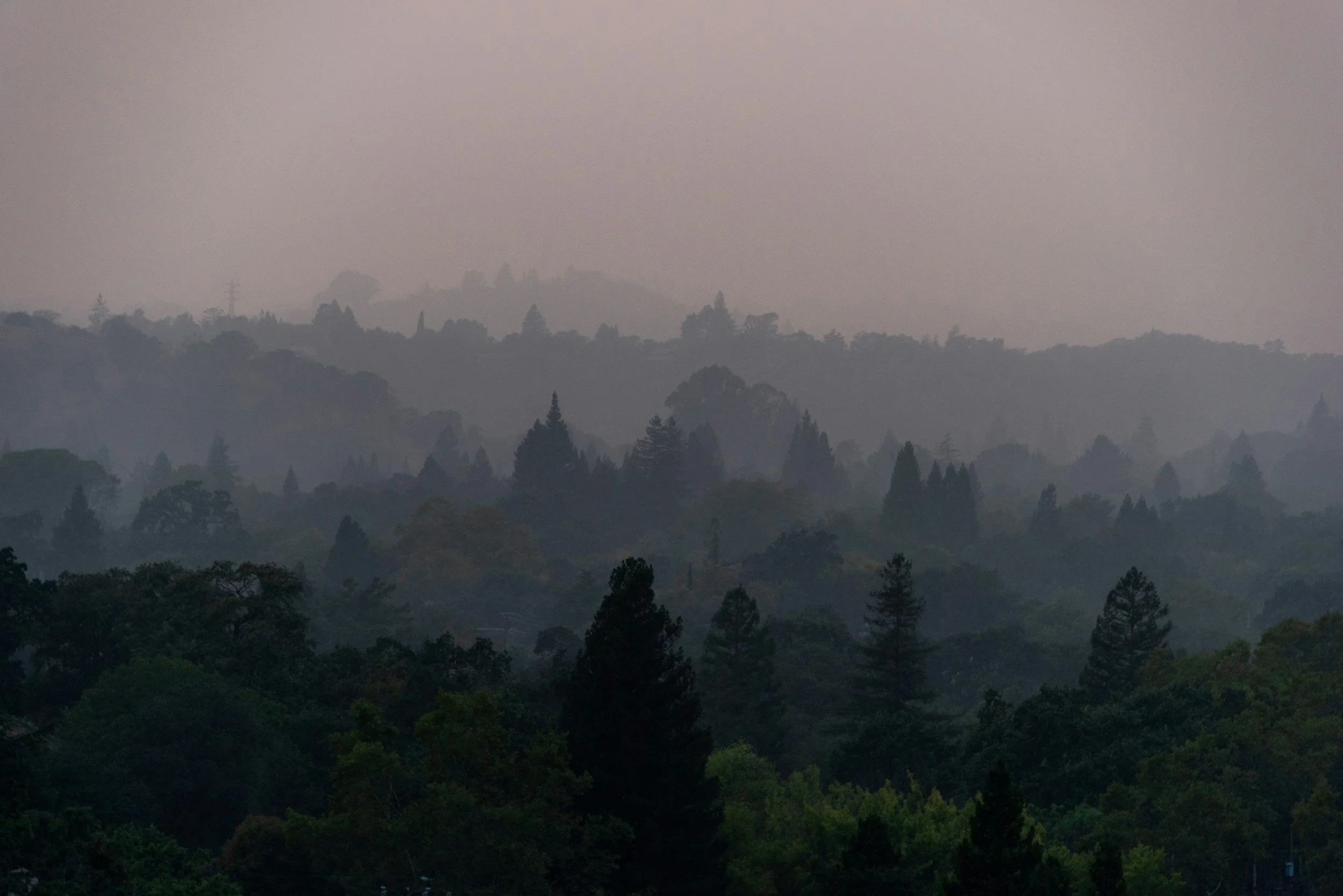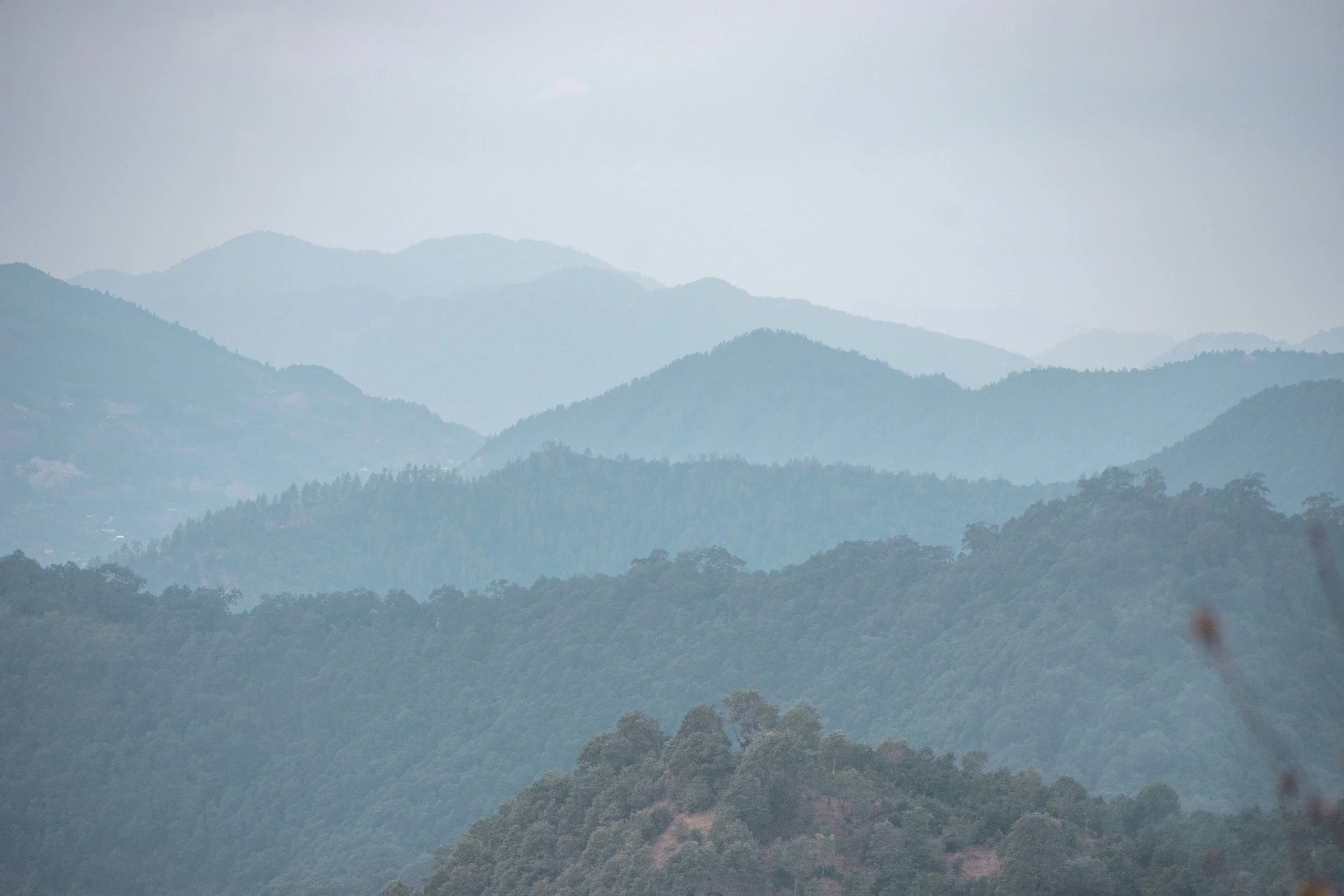Blog By: Dylan Diedrich
From the mouth of Mammoth Cave, the horizon should stretch endlessly over Kentucky’s hills. Instead, visitors often see only a muted gray curtain. The haze that settles over the world’s longest cave system is not a result of weather; it’s a symptom of a legal and regulatory fog that the state has yet to clear.
When Congress amended the Clean Air Act (CAA) in 1977, it recognized that air pollution does more than harm our lungs, it also steals our landscapes.[i]
The Act established the Regional Haze Program which is designed to restore “natural visibility” in the nation’s most prized natural areas.[ii] National parks and wilderness preservations designated as Class I areas are subject to the provisions of the CAA.[iii] Under the CAA, states must submit State Implementation Plans (SIPs) to the Environmental Protection Agency (EPA), detailing how they will curb emissions of sulfur dioxide (SO₂), nitrogen oxides (NOₓ), and other fine particulate matter that obscure visibility.[iv]
Mammoth Cave National Park in south-central Kentucky is subject to the provisions of the CAA. On a pristine day, visitors should see nearly 110 miles in the distance.[v] Instead, haze over the horizon often cuts that range in half.[vi] On the worst days, visibility drops to less than 25 miles.[vii] The air above this underground wonder tells a story of unfinished legal work. Kentucky once showed progress towards reducing haze. Its first regional haze plan, approved by EPA in 2012, led to dramatic emission reductions, roughly a 78% decline in SO₂ and 40% in NOₓ statewide.[viii] The improvement was real, but it was also incomplete.
Under the CAA, progress is not intended to be a one-time event, it is an ongoing obligation that requires states to revise their haze plans every ten years.[ix] For the current planning period (2019–2028), Kentucky has fallen behind, in 2023, the EPA formally found that the Commonwealth had failed to submit a complete SIP for the next ten years.[x] That “finding of failure to submit” sets the stage for a federal takeover, a Federal Implementation Plan (FIP), if the state doesn’t act.[xi]
When Kentucky finally circulated a draft plan in 2024, environmental critics were not impressed. The Sierra Club (a national grassroots environmental organization) and other groups argued that it identifies only two “significant” polluters affecting Mammoth Cave, leaving out several coal-fired power plants and industrial sources whose emissions visibly contribute to the haze.[xii] They contend that the plan downplays the scale of the problem and fails to apply modern pollution-control technology.[xiii] The Sierra Club sued the EPA that same year, leading to a settlement that now pressures both the agency and Kentucky to finalize stronger plans.[xiv]
Regional haze is not just about pretty views. The same pollutants that cloud the horizon also harm the lungs, soils, and vegetation of Kentucky.[xv] Ozone levels in and around Mammoth Cave have caused visible damage to plant species because “the ozone weakens the plants and makes them more susceptible to insects and disease.”[xvi] Acidic deposition from airborne sulfur and nitrogen also threatens the fragile cave ecosystem and the groundwater beneath.[xvii]
The human consequences are harder to see but equally dangerous. Fine particulates, especially Particulate Matter smaller than 2.5 micrometers (PM₂.₅), aggravate asthma, heart disease, and respiratory distress.[xviii] Communities near power plants often face the greatest burden.[xix] To further worsen the problem, these communities are typically low-income or rural populations with limited access to health care.[xx] Critics of Kentucky’s draft plan note that it lacks any serious discussion of environmental justice, despite EPA guidance urging states to consider how haze-related pollution disproportionately affects vulnerable groups.[xxi]
Kentucky could strengthen its State Implementation Plan (SIP) by conducting a comprehensive review to identify all significant sources of visibility impairment, including both stationary sources such as coal-fired power plants and mobile sources that contribute to regional haze. Implementing Best Available Retrofit Technology (BART) requirements for older facilities would be a key step toward reducing visibility impairment. BART is a regulatory requirement under the Clean Air Act’s Regional Haze Rule that mandates affected sources to install modern pollution control technologies to minimize emissions which contribute to haze in Class I areas like Mammoth Cave National Park.[xxii] Evaluating and applying BART ensures that legacy plants meet emission standards comparable to newer facilities, improving air quality and visual clarity across state and regional boundaries.[xxiii] Finally, greater transparency, achieved by publicly sharing emissions data, modeling methodologies, and policy assumptions, would promote accountability and rebuild trust among communities and stakeholders affected by poor visibility.[xxiv]
Ultimately, this is a test of political will as much as legal compliance. Mammoth Cave is a global treasure, and Kentucky’s stewardship should extend beyond its entrances. The haze above the park is both literal and symbolic, a reminder that environmental protection doesn’t fail overnight, but gradually, through the slow erosion of willpower. Until Kentucky clears that haze, the view from the cave’s mouth will remain as clouded as the state’s environmental future.
[i] Air Pollution: Current and Future Challenges, EPA (2025), https://www.epa.gov/clean-air-act-overview/air-pollution-current-and-future-challenges [https://perma.cc/35EM-BGHY].
[ii] Regional Haze Program, EPA (2024), https://www.epa.gov/visibility/regional-haze-program [https://perma.cc/CR5B-V6DV].
[iii] Id.
[iv] 42 U.S.C. § 7491(a) (1977); see also, Regional Haze Program Overview, U.S. EPA (2024), https://www.epa.gov/visibility/basic-information-about-visibility [https://perma.cc/XN7V-CSRU].
[v] Air Quality in Mammoth Cave National Park, Nat’l Park Service (2024), https://www.nps.gov/articles/airprofiles-maca.htm [https://perma.cc/5BGC-8BYQ].
[vi] Id.
[vii] Id.
[viii] EPA Approves Revisions to Kentucky Regional Haze Plan, EPA (2012), https://www.epa.gov/newsreleases/epa-approves-revisions-kentucky-regional-haze-plan [https://perma.cc/U7YT-39YY].
[ix] Supra note 4.
[x] Findings of Failure to Submit Regional Haze SIPs for the Second Planning Period, EPA (2023), https://www.epa.gov/visibility/findings-failure-submit-regional-haze-state-implementation-plans-second-planning-period [https://perma.cc/73M8-VFAL].
[xi] Id.
[xii]Nadia Ramlagan, Critics: Kentucky Regional Haze Plan Doesn’t Protect Environmental, Public Health, Public News Service (July 10, 2024), https://publicnewsservice.org/2024-07-10/air-quality/critics-ky-regional-haze-plan-doesnt-protect-environmental-public-health/a91206-1 [https://perma.cc/HZG8-2CAD].
[xiii] Lee Ziesche, Haze Pollution Settlement Puts Pressure on Kentucky Regulators to Submit Stronger Plans to Protect National Parks and Improve Air Quality, Sierra Club (July 2024), https://www.sierraclub.org/press-releases/2024/07/haze-pollution-settlement-puts-pressure-kentucky-regulators-submit-stronger [https://perma.cc/6UDQ-NCSK].
[xiv] Id.
[xv] Erica Peterson, At Mammoth Cave, Studying the Effect of Ozone on Plants, Louisville Public Media (Nov. 26, 2014), https://www.wkms.org/environment/2014-11-26/at-mammoth-cave-studying-the-effect-of-ozone-on-plants [https://perma.cc/G84L-UT7A].
[xvi]Id.
[xvii] Liam Niemeyer, Kentucky Urged to Curb Air Pollution that Makes Mammoth Cave One of the Haziest National Parks, Kentucky Lantern (Aug. 1, 2024), https://kentuckylantern.com/2024/08/01/kentucky-urged-to-curb-air-pollution-that-makes-mammoth-cave-one-of-the-haziest-national-parks/ [https://perma.cc/TZ8G-ED6M].
[xviii] Particulate Matter Basics, EPA (2025), https://www.epa.gov/pm-pollution/particulate-matter-pm-basics#effects [https://perma.cc/FCS5-5USX].
[xix]Health and Environmental Effects of Particulate Matter, EPA (2025), https://www.epa.gov/pm-pollution/health-and-environmental-effects-particulate-matter-pm [https://perma.cc/BQ9H-2DSN].
[xx] Id.
[xxi] Id.
[xxii] Protection of Visibility: Amendments to Requirements for State Plans 82 Fed. Reg. 3078 (Jan. 10th, 2017).
[xxiii] Id.
[xxiv] National Park Service Air Quality Analysis Methods (2022 Version), Nat’l Park Service (2022), https://www.nps.gov/articles/air-analysis-methods-2022.htm [https://perma.cc/HH5C-GTMW].



